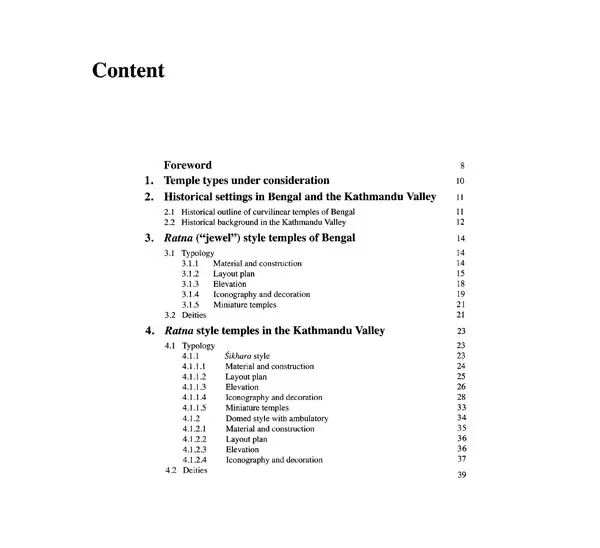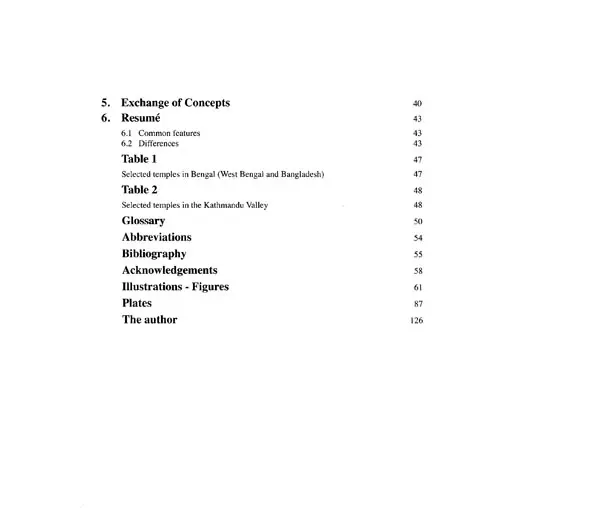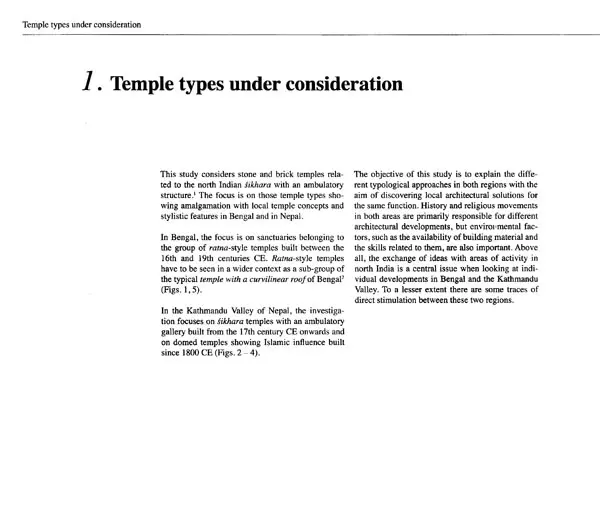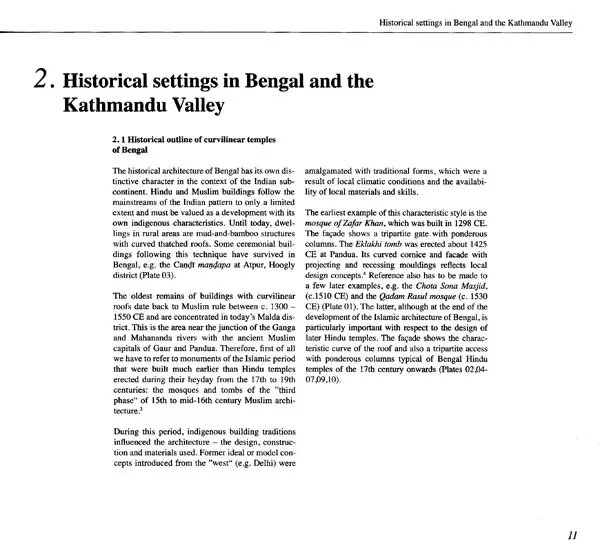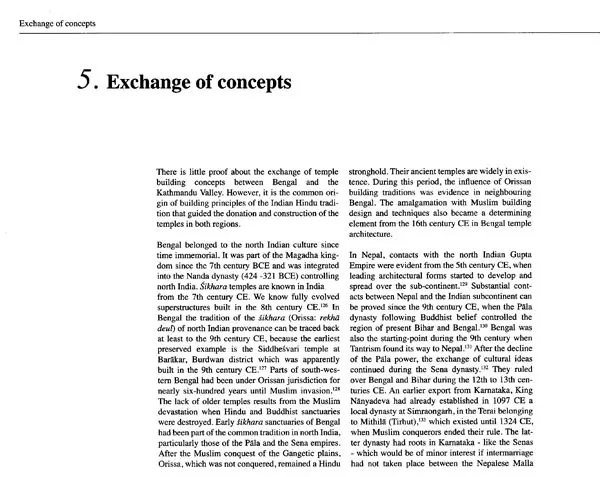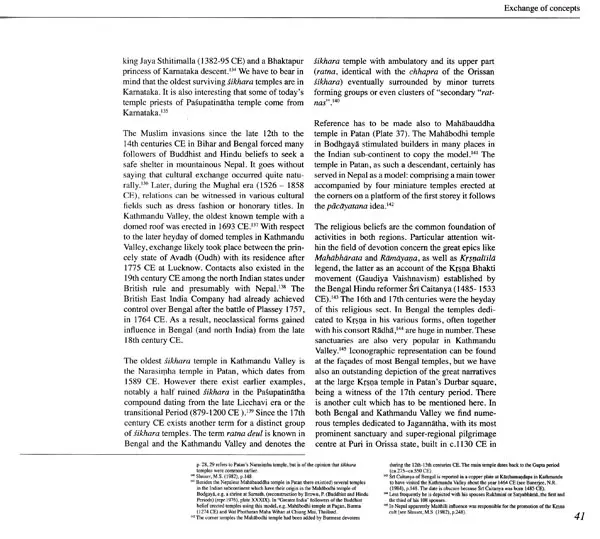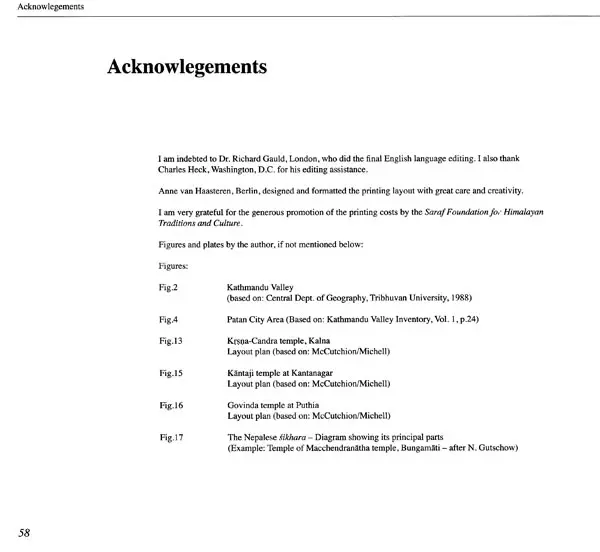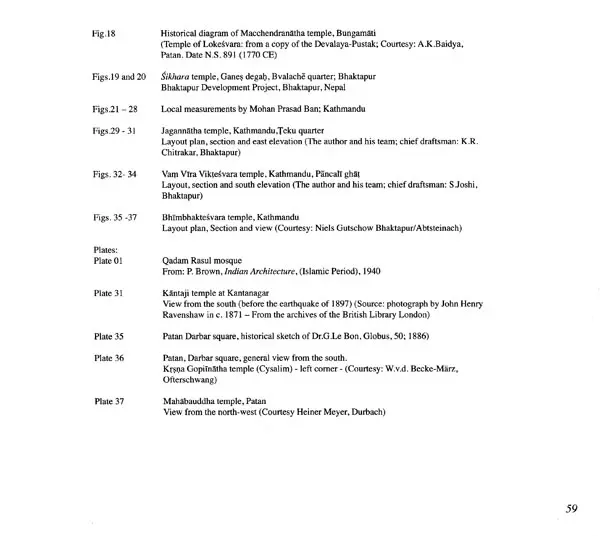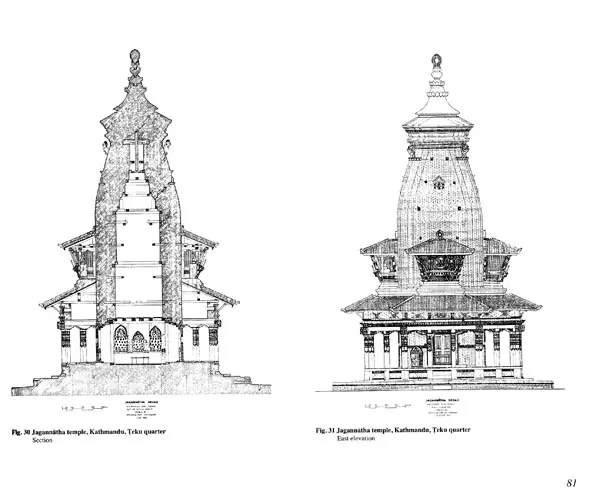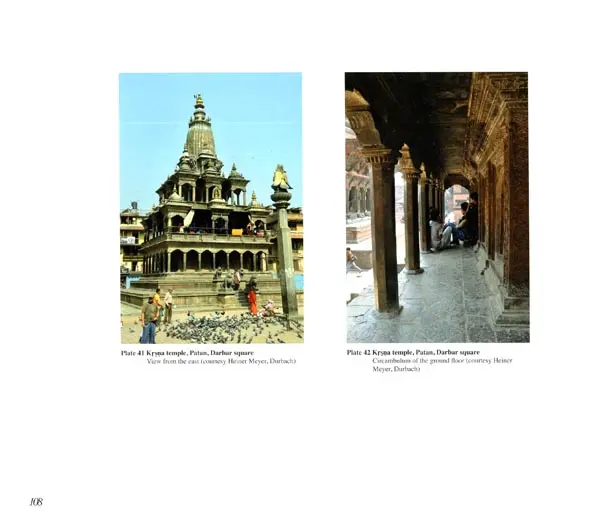
Ratna Style Temples With An Ambulatory- Selected Temple Concepts in Bengal and The Kathmandu Valley
Book Specification
| Item Code: | UAD575 |
| Author: | Raimund O. A. Becker Ritterspach |
| Publisher: | Himal Books, Nepal |
| Language: | English |
| Edition: | 2016 |
| ISBN: | 9789937597296 |
| Pages: | 127 (Throughout Color and B/W Illustrations) |
| Cover: | PAPERBACK |
| Other Details | 8.50 X 9.50 inch |
| Weight | 490 gm |
Book Description
This study was just completed when a heavy earthquake of 7.9 magnitude with many aftershocks took place on April 25 2015, at the north-west of the Kathmandu Valley. It caused a high death toll and serious damage to buildings and infrastructure in the whole region. The loss of monuments in the Kathmandu Valley comes close to the disastrous tremor in 1934. Among these losses are numerous monuments which are discussed or mentioned in the following study.
It is heartbreaking to see the ruins of high ranking temples such as Vatsala Devi temple, Bhaktapur, Macchendranatha temple, Bungamati and Jange Hiranya Hem Narayana temple, Kathmandu. Several other monuments suffered damage.
The illustrations show the situation before the earthquake. The textual study, sketches and photographs are a documentation of a past reality. This study may contribute to a future reconstruction of lost structures.
This study deals with a special form of the Sikhara temple with an ambulatory surrounding the cella. This temple design is common in Bengal and the Kathmandu Valley, and shows a great variety among the two local traditions. The subject matter draws on my longstanding interest, which spans several decades. I considered certain aspects of this temple design in two earlier publications on Nepalese temples.
The temples of historic Bengal are now in two separate national territories: India's State of West-Bengal and Bangladesh. My visit to West-Bengal in 2001 had led me to monuments in the districts of Bardhaman, Bankura, Birbhum, Hooghly and Howrah. The sites at Bishnupur, Kalna, Bansberia and Sukharia receive particular attention in this study. A wide range of outstanding examples of ratna style temples can be found at these sites. Religious life is still actively observed in most of these sanctuaries, except for Bishnupur, where most sites have a museum status.
Many of the temples considered in this study are in Bangladesh, where the Hindu population is now a religious minority. Nevertheless, some of these monuments are considered by Hindus to be national cultural heritage such as the giant Kantaji temple in Dinajpur district. This monument has to be highlighted, although it is now only a torso after an earthquake in 1897 caused major structural damage. In this context, a general reference is made to David McCutchion's outstanding documentation on the Hindu brick temples of Bengal, conducted from 1960 until his untimely death in 1972. His work was edited painstakingly by George Michell in the book: Brick Temples of Bengal.
The Nepalese sanctuaries representing the ratna style are a minority among the built historic heritage in the Kathmandu Valley. The tiered temples, with their cantilevered tile roofs, dominate the traditional town fabric. Sikhara temples are relatively rare, except in Patan where the majority of the temples belonging to this type are located and are still integrated into the religious life of the population. The domed temples, a special form of the ratna style sanctuary, were favoured by the rulers and high ranking officials of the 19th century. They are concentrated south of ancient Kathmandu, near the Bagmati River, where another group of temples showing composite styles are also located.
My personal attachment to the people of the Kathmandu Valley, especially its craftsmen and their building tradition, goes back for more than four decades. The base of my devotion to this authentic culture was laid in 1974 when I was a member of the German team of the Bhaktapur Development Project, a bilateral town development project in the royal town of Bhaktapur in the Kathmandu Valley. In this role I had the privilege of leading the restoration of historic monuments. Later on, in the 1980s, I realized various research projects dealing with particular forms of the traditional architecture in the Kathmandu Valley. This study draws on my long-lasting cooperation with Nepali Institutions and exchange of research results with scholars from many countries, which has contributed to a wealth of data and useful information.
My interest was also attracted by architectural developments in north India, particularly the traditional brick architecture of Bengal, where numerous temples are dedicated to the same deities revered in the Kathmandu Valley and in Bengal. The following study, which is a result of observations of a particular group of Sikhara temples, aims to contribute to the understanding of the characteristic features of both regions.
**Contents and Sample Pages**
